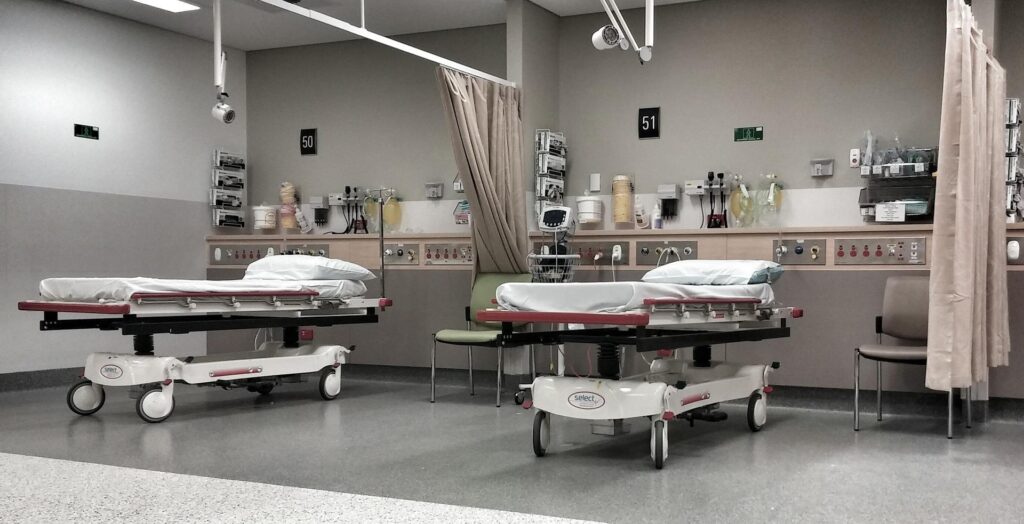All hospitals need to have an adequate supply of important equipment so that they can offer their patients the best possible care. In fact, there are essential pieces of equipment that are designed primarily for the comfort of hospital patients and to make work easier for the hospital staff.
Here are 5 pieces of equipment that every hospital needs for the comfort of their patients and the well-being of their staff.
1 Hospital Trolleys
Different types of trolleys are used within hospitals for different purposes. Ward and Clinic trolleys are used to transport items such as laundry and medical supplies around the hospital safely. Usually, stainless steel trolleys with robust wheels are preferred for hospital use, to stand up to the heavy usage.
Other types of trolleys, for example, a shower trolley, can be used to make showering and dressing of patients easier and more comfortable. These trolleys have hydraulic components so patients can easily be transferred from their beds onto the trolley. This gives hospital staff better control and eliminates the risk of possible manual handling injuries.
2 Wheelchairs
Wheelchairs are primarily used to transport patients around the hospital and also to take them to the entrance when they’re being discharged. There are different types of wheelchairs for individual needs.
These include heavy-duty wheelchairs designed specifically for bariatric patients and hemiplegic wheelchairs that can be used by patients that have some type of spinal injury or paralysis.
Ward wheelchairs are commonly used in hospital wards as they provide easy transport for patients from one ward to another or to another area of the hospital for specific treatments. These wheelchairs often have swing-back armrests and leg rests to make it easy for staff to transfer patients from the bed to the chair and back again. They are usually designed with vinyl covers to make cleaning for infection control easy.
3 Pressure Mattress
Pressure mattresses are absolutely essential for long-term patients to alleviate bedsores that can occur when the patient has been lying in the same position for an extended length of time. Different patients require varying types of pressure mattresses. At lower risk levels, a high quality foam pressure mattress may be ideal. These mattresses are made with layers of special pressure relieving foam and have durable, yet breathable covers. For patients at higher risk levels, an alternating overlay or full mattress replacement system may be required. These pressure relieving mattress types incorporate carefully designed air pockets that help to place less pressure on the main pressure points in the body. These air pockets are designed to inflate or deflate in order to redistribute the pressure to different parts of the body. Most times, this airflow is controlled by a pump – but pumpless options do exist!
4 Commode Toilet Chairs & Shower Commodes
Over-toilet commodes or chairs provide extra support and comfort for a patient who has limited mobility and needs the support of arm and backrests. Many of these units are adjustable to suit each patient’s needs.
In addition, there are also bedside commodes for patients who are unable to walk any distance after recovering from an illness or injury. This type of commode is kept in the patient’s room for ease of use and includes a removable bowl that is concealed with a vanity skirt.
Mobile shower commodes are similar to a wheelchair and allow the patient to be wheeled into the shower cubicle. The castors can be locked which provides extra stability for the patient while showering.
5 Bed Sensors
Bed sensors are used in hospitals in conjunction with an alarm system to alert hospital staff when a patient gets out of bed. The alarm is set off when there’s a reduction of pressure on the sensors.
These ensure that hospital staff are alerted when a patient gets out of bed and are vitally important to prevent falls and other injuries for patients recovering from surgeries.
In Summary
Hospitals need a whole range of different equipment supplies in order to give their patients the best possible care. Many of these pieces of equipment make patient care and mobility much easier and also protect staff from possible manual handling injuries.
Image by KoalaParkLaundromat from Pixabay


